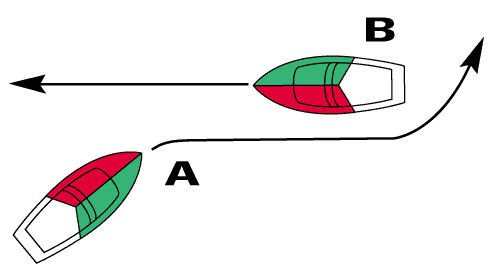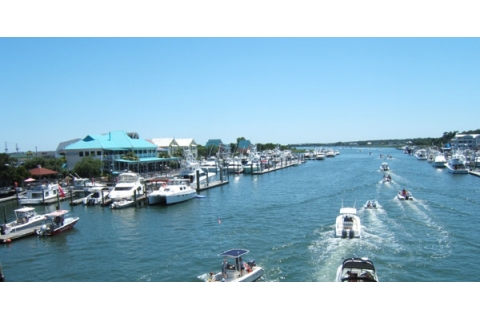Jun 19, 2017
Safety Tips for Busy Waters
With summer weather in full effect and the 4th of July right around the corner, now is the time to refresh yourself on the right safety measures to take on busy waters. Whether you are taking the boat out on the lake or the ocean, these tips will help you navigate safely through the water during prime boating season.
Note the right of way when passing boats
In order to pass boats on the water, which will happen often with more boats and personal watercraft (PWC) out there, it’s necessary to know who has the right of way in which situation. When you are driving a power-driven boat, you need to give the right of way to anchored boats, commercial fishing boats, boats that are towing or picking up navigation markers, etc. Here are three instances where you need to recognize the right of way:
When you are coming at another boat or PWC head-on, both of you need to give way to each other. Each boater should turn their boat to the starboard (right).

If you come up on a boat on their port (left) side, you need to turn starboard (right).

When you come up behind a boat/PWC and need to pass, maintain speed and pass on either side.

Know the way navigation lights work
Navigation lights are essential when taking a night ride or fishing after dark. The requirements for these lights are different for different types/lengths of boats.
Boats less than 39.4 ft in length need red and green sidelights that can be seen at least one mile away.
The red light should be on the port (left) side of the bow.
The green light should be on the starboard (right) side of the bow.
All-around white light or a masthead AND sternlights are also required and should be visible from at least two miles away and also be visible from all directions in a 360 degree circle.
If your boat is over 39.4 ft long, the US Coast Guard has further rules and regulations.
KNOW YOUR SOUND SIGNALS AND HORNS!
Just like you use turn signals in a car, you need to use signals on a boat. Since a turn signal light would not be effective on the water, all boaters should learn the following sound signals and horns and how long they are (short blast is 1 second, long blast is 4-6 seconds). While many boaters do not use horns as much as they did in the past, they are good to know when you are in doubt.
When changing your course:
One short blast: you are trying to pass the other boater on the left (port) side
Two short blasts: you are trying to pass the other boater on the right (starboard) side
Three short blasts: you are backing up
Warnings and alerts:
One long blast: warning signal, ex. when you are coming around a blind bend
Five+ short, fast blasts: To let another boater nearby know that you do not understand what they are doing or it is not safe. Also a general danger signal
The most important part of boating is staying safe. Summer can be the best time for family days on the water or night cruise. Remember to keep these safety tips in mind next time you take the boat out on busy waters!
